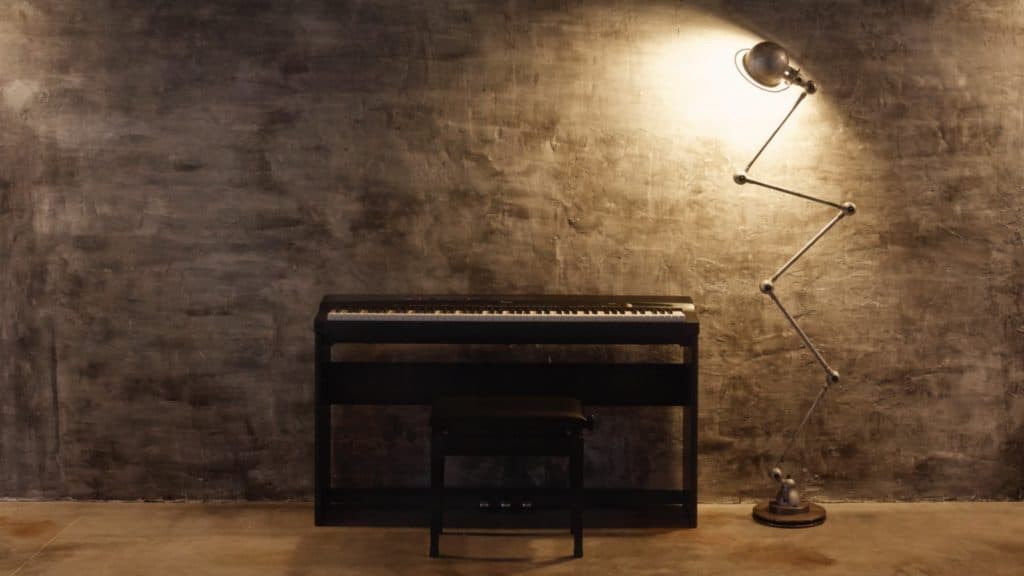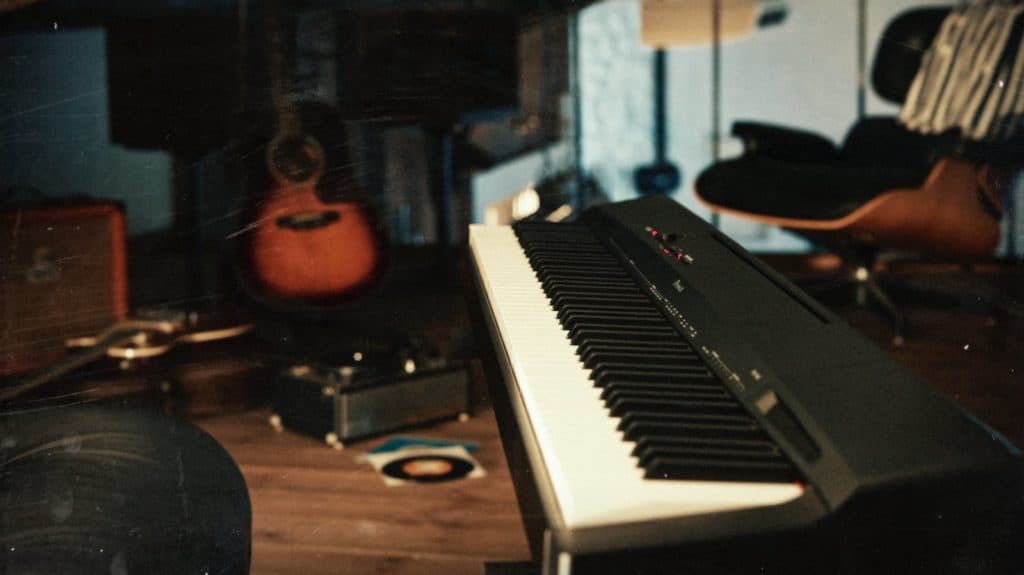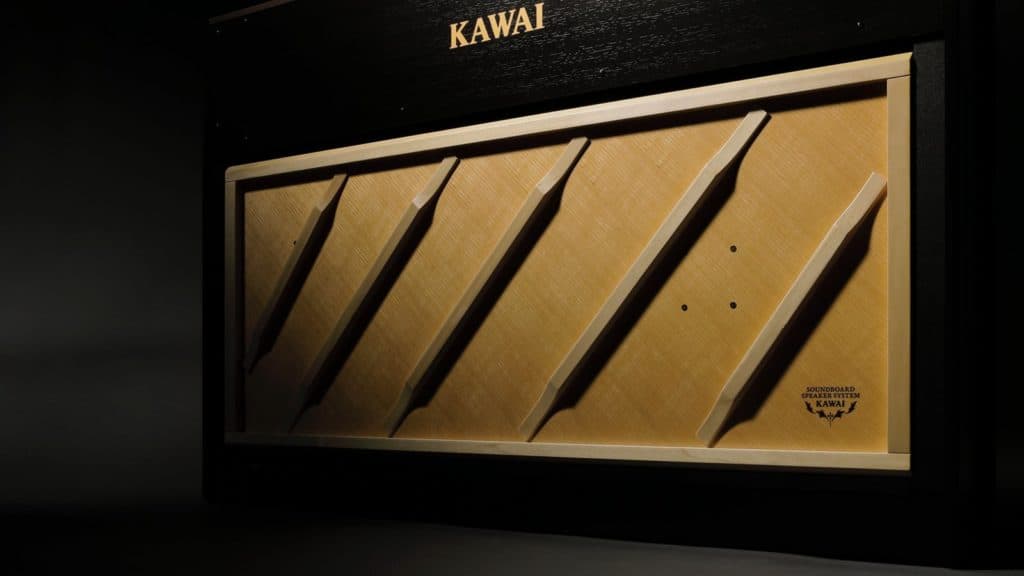There are several factors to consider when positioning your new digital piano. The playback systems of digital pianos vary greatly, so it is worth taking a closer look at the details. And there are a few other factors to keep in mind.

There are several factors to consider when positioning your new digital piano. The playback systems of digital pianos vary greatly, so it is worth taking a closer look at the details. And there are a few other factors to keep in mind.
When you buy your first digital piano, you probably already know where you want it to go – and it will most likely be in your living room. A wise choice, because music should be at the center of your life, and a musical instrument in a prominent place shows a sense of art and culture.
One thing to remember when positioning your digital piano is that if you want to play the piano, you also have to practice! It doesn’t make sense to place a digital piano in an area of the living room that may have other priorities. For example, practicing while someone else is watching TV simply won’t work.
Do you primarily plan to play the digital piano with headphones? In this case, the location is not as critical. However, you still shouldn’t place the piano right next to a TV. Otherwise, the same applies to a digital piano as to a piano: Playing loudly, i.e., without headphones, should fill your living room with beautiful sound. Digital musical instruments differ from acoustic ones in this respect as the orientation of the built-in speakers has a significant effect on the sound they produce.

There are big differences here: The speakers are either built into the control panel area, facing up, or located under the keyboard. In addition, hybrid models with woofers facing down and tweeters facing up or out for a nice stereo effect are also available. The basic rule is that the more sophisticated the instrument, the more important it is to correctly position the digital piano to get the most out of its sound.
Typical home pianos are designed to be placed with the back of the piano against the wall. In any case, you should leave about 10-20 centimeters of space between the instrument and the wall. Please be especially careful with digital pianos that have speakers that face backward. If you place such a digital piano too close to the wall, you won’t be able to get the full potential out of the speakers.

Sound reflection may also distort the sound of the instrument if the distance from the wall is too small. Hybrid digital pianos with a soundboard system, such as the Kawai CA-901, even behave similarly to acoustic pianos. Consequently, they will not achieve their full sonic potential if placed too close to the wall.
While this is more relevant with acoustic instruments, in some ways it also applies to digital pianos. Placing a piano too close to a radiator may cause the soundboard to crack because the thin wood of the soundboard is sensitive to drying.
Digital pianos are much less sensitive in this regard. However, digital pianos can also suffer from severe temperature fluctuations, especially if they have wooden keys or a transducer soundboard.
Every room has a specific acoustic profile: Reflections cause resonances that can boost or cut certain frequencies. This means that the sound of the digital piano, which is perfect in theory, can sound quite unbalanced when played through the digital piano’s built-in speakers.
In such cases, EQ profiles found in the system settings of higher-end digital pianos can be helpful. These are pre-defined equalizer settings that you can easily apply without any sound engineering know-how. Ideal for home users!
In the case of persistent room resonance, it may be possible to improve the situation using special editing functions. Most of the editing functions of Virtual Technician or PianoRemote (Kawai), Piano Designer (Roland), and Piano Room/Smart Pianist (Yamaha) have a global effect on the entire sound. However, you can adjust some functions individually, note by note. Kawai digital pianos offer key volume, while Roland Piano Designer also allows you to change the character of the sound. These can be useful service functions for piano dealers and builders – but as a layman, it’s best to leave them alone. Nevertheless, this is how it’s done…
How to compensate for the accentuation of individual notes due to room resonance:
Make sure you know what you are doing when making these sound changes. Otherwise, you run the risk of making the piano sound worse. Also, do not expect miracles from this technical option. Even the most flexible editing options cannot compensate for fundamentally poor room acoustics. Parameters such as key volume and sound character are for fine-tuning – nothing more.
It is best to place the digital piano in a location that is not too far from the nearest power outlet. As a general rule, avoid running power cords across the room, as they are a dangerous tripping hazard. Keep external power supplies and outlets away from areas where you move around.
Digital pianos and wall shelves are a wonderful combination and a convenient way to keep sheet music and other accessories within easy reach. If you plan to place your new digital piano under a shelf or bookcase, don’t forget about the music stand. There’s one more thing to consider when placing a digital piano in a room, even after taking into account both the height of the piano and the music stand: Make sure there is enough space for an average-sized music book, approximately a foot (30 cm) high.
The specifications for digital pianos do not always include the height of the instrument, so it is worth checking before you buy! Some manufacturers list the height without the music stand, while others list both heights – with and without the music stand.
Electronics and moisture are a notoriously bad match. So, while flowers may look nice on a piano, they simply don’t belong there! It’s all too easy for water to seep into the digital piano when watering flowers. Or imagine a water-filled vase of flowers tipping over – in a matter of seconds, this would ruin a digital piano forever.
Everyone knows the bell-like, cool FM piano sound, often enhanced with effects and found in nearly every digital piano. This sound was modeled after the legendary Fender Rhodes but has a much brighter, more artificial ...
You don't have to be a professional pianist to play the piano chords for the song Someone Like You. And yet it is one of Adele's most successful songs. In that sense, Someone Like You ...
In our "PIANOO Giveaway", Modartt is offering three full user licenses for Pianoteq. This physically modeled software instrument runs on MacOS, iOS, Windows, and Linux. You have the chance to win a license for one ...
70 years of Thomann - 70 years of passion for music. Under the title Behind the Passion, the music store tells the story of Thomann and offers a closer and more personal look behind the ...
Kawai's ES Series portable pianos are popular with both beginners and advanced players, offering high-quality features in the €500-€1,600 price range. Key improvements over previous ES models include a significantly lighter weight, bass reflex speakers, ...
Why does the world need a Piano Day? "There are many reasons," says Nils Frahm, "but above all, it can't hurt to celebrate the piano and everything related to it: Artists, composers as well as ...
Since not every piano VST is available as a standalone version, you need host software. If you don't want to buy an expensive digital audio workstation, you can use a free DAW instead. And you ...
Save the Date! Superbooth 2025 will take place from May 8-10. This year, too, you can look forward to the performance and workshop program, which invites you to the usual location at the Freizeit- und ...
If you want to record authentic piano tracks in a DAW, you need a good MIDI keyboard. Of course, you can also connect a digital piano or stage piano to your PC instead. Depending on ...
The term "felt piano" is closely associated with the popularity of the neoclassical genre, where this very soft sound has almost become a trademark. The sound and its poetic quality are actually a by-product of ...
Playing piano with the sustain pedal - it's the easiest thing in the world! Full-throttle on the right pedal and hammer on the keys - it's great fun and sounds excellent. However, getting from one ...
You'll find the term triple sensor, 3-sensor, or tri-sensor technology in the specifications of many digital pianos. But is a triple-sensor digital piano really better, or can you safely ignore this feature? A brief look ...
You are currently viewing a placeholder content from Facebook. To access the actual content, click the button below. Please note that doing so will share data with third-party providers.
More InformationYou are currently viewing a placeholder content from Instagram. To access the actual content, click the button below. Please note that doing so will share data with third-party providers.
More InformationYou are currently viewing a placeholder content from X. To access the actual content, click the button below. Please note that doing so will share data with third-party providers.
More Information